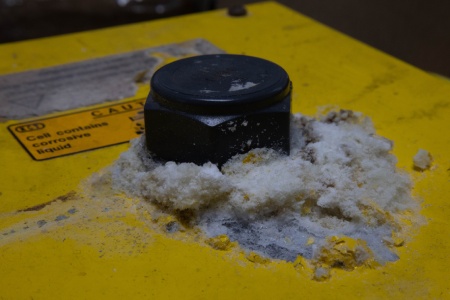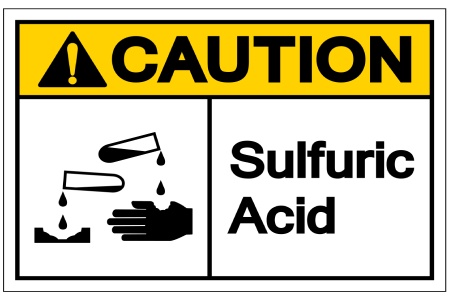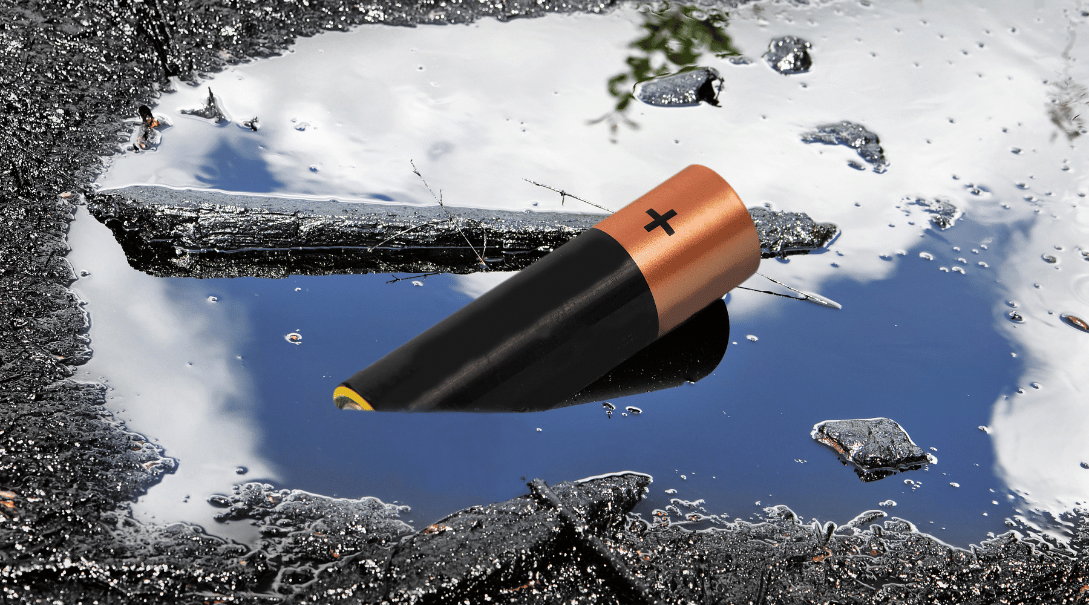Suppose you’ve ever opened an aging electronic device that’s been sitting in a box in the attic for several years. You may have noticed some strange residue around its battery compartment in that case. If that is the case, chances are that battery acid has leaked (or is leaking) out, which can destroy electronics. More alarming, though, is that it could possibly harm anyone who comes into contact with it.
The two types of batteries that the average person will experience are leaks from alkaline and lead-acid batteries. As for lead-acid (or simply “lead”) batteries, the liquid inside is a widely known threat — sulfuric acid — whereas alkaline batteries are filled with a substance more on the pH scale’s basic end than the acidic. Be that as it may, remember that bases can cause burns as harmful as acids.
Cleaning up a battery acid spill isn’t a “one size fits all” approach, thanks to the different types of chemicals involved. You must be able to identify which type of battery acid spill you’re encountering before performing effective battery acid clean-up procedures.
Table of Contents
Understanding Battery Acid and Its Hazards
Lead batteries are commonly found in cars, motorcycles, and other vehicles. Removing these batteries is often a drama-free operation. Still, should they leak, you must clean the released acid quickly and responsibly to avoid harming yourself, your vehicle, and the environment.
Inside lead-acid batteries are measurable amounts of sulfuric acid, a corrosive and toxic chemical. It’s best to avoid any exposure to it, so rather than researching how to clean up a lead-acid battery spill, you may be better off contacting an emergency response service. Alkaline battery spills aren’t quite as dangerous, but the potassium hydroxide inside can still burn the skin, given extended exposure.
Safety Measures Before Cleaning Up a Battery Acid Spill
 Use the following tips to create a checklist of what to use to clean battery acid, should you ever need to perform such a task.
Use the following tips to create a checklist of what to use to clean battery acid, should you ever need to perform such a task.
Protect Your Eyes and Skin
Learning how to clean battery acid starts with self-protection. You will need some basic personal protective equipment (PPE) that consists of the following items:
- Non-permeable gloves, such as latex or nitrile gloves
- Goggles, ideally ones that completely cover the eyes
- Optionally, you can use a face shield rather than goggles, but goggles are preferred.
- A respirator, especially if you have any respiratory issues. Please note, wearing a respirator does no good if worn incorrectly.
Additionally, to avoid irritating the skin of your shin, wear a long-sleeve shirt and pants.
Ventilate the Area
Ensure that all surrounding windows and doors are open to keep any toxic fumes from building up. If you have fans, you can use them to circulate the air faster, which is even better.
Have a Fire Extinguisher On Hand
Battery acid is a flammable substance, so if the battery acid ignites, have a dry chemical or ABC extinguisher nearby.
Keep Children and Pets Away
If you’re concerned about children or pets entering the affected room, make sure you block off all entrances with pet gates or pieces of furniture that still allow for proper ventilation.
Know the Type of Battery
Identify the spilled battery to clearly understand which type of acid you must clean. That way, you can approach the spill with the correct amount of caution and an understanding of the proper safety measures and what to use to clean battery acid spills.
Step-by-Step Procedure for Cleaning Up a Battery Acid Spill
Before you start the cleaning process, determine whether the spilled acid poses a risk to any nearby humans, animals, plants, or the environment at large. If so, contact emergency response services immediately.
Put on Protective Gear
Put on your gloves and eye/face protection. You may also want a respirator to avoid the effects of any noxious fumes.
Neutralize the Acid
 To clean sulfuric acid, use a solution of one pound of baking soda per gallon of water. Apply with a cloth or sponge, and avoid splashing or spreading the acid. Use mild acids, such as lemon juice or vinegar, for alkaline batteries, and dab the spill area with a cloth. Use a toothbrush for any alkaline leakage that refuses to fade.
To clean sulfuric acid, use a solution of one pound of baking soda per gallon of water. Apply with a cloth or sponge, and avoid splashing or spreading the acid. Use mild acids, such as lemon juice or vinegar, for alkaline batteries, and dab the spill area with a cloth. Use a toothbrush for any alkaline leakage that refuses to fade.
When removing a car battery, you may spill battery acid onto the car itself. If so, here’s how to clean up car battery acid spill on metal bodywork: Spread baking soda over the area, then add a little water to activate it. Clean the area and dry it with a paper towel, then remove any remaining residue with a scrub sponge.
Clean Up the Spill
Use cloths and sponges to sop up all liquids. Place them into a plastic garbage bag to avoid further contamination as they become soaked.
Disinfect the Area
Disinfect all areas affected by the acid using a solution of mild detergent or vinegar mixed with water. The mixture will remove residual acid and ensure surfaces are clean.
Proper Disposal
Place your leaking battery or batteries and used cloths, sponges, or toothbrushes into two doubled-up trash bags. Remember, battery acid is hazardous waste, so you must take it to a household hazardous waste (HHW) facility or contact your local government.
You can also contact a service provider like Alpha-Omega Training and Compliance (AOTC) should you have any questions about the hazardous waste disposal process.
Tips for Preventing Battery Acid Spills
While understanding how to clean up a battery acid spill is essential knowledge, knowing how to avoid leaks or spills in the first place is far preferable.
Store Batteries Properly
Batteries should be kept away from direct sunlight and in dry, cool locations. Ensure there are no heat sources nearby and do not store the batteries on metal surfaces, as metals may cause a spark and ignite battery acid.
Handle Batteries with Care
Do not drop or otherwise puncture batteries, as doing so can result in leaks.
Secure Battery Terminals
Short circuits heat up batteries and cause acid to leak, so to avoid a scenario like that, cover the terminals with electrical tape.
Dispose of Batteries Properly
Never throw batteries in the trash. Take them to a recycling center or an approved collection site.
Inspect Batteries Regularly
Inspect your batteries regularly and look for signs of damage or leaking. Replace your batteries as needed.
Environmental Impact of Battery Acid Spills
The toxicity of battery acid can have a significant negative environmental impact. The sulfuric acid in lead-acid batteries can easily flow through the soil and into groundwater. It can also contaminate lakes and streams, and any wildlife and aquatic species that come into contact with sulfuric acid can be injured or killed.
When to Contact Alpha-Omega Training and Compliance for Cleanup
Battery acid spills are hazardous, but AOTC has the experience and knowledge necessary to handle them safely. Large spills can be overwhelming and are best left to professionals, so if you experience a spill at any time, day or night, contact AOTC’s 24-Hour Emergency Spill Response service. We promise fast deployment and guaranteed government-compliant cleanup practices!
Don’t let a spill get out of hand: Call AOTC immediately.
